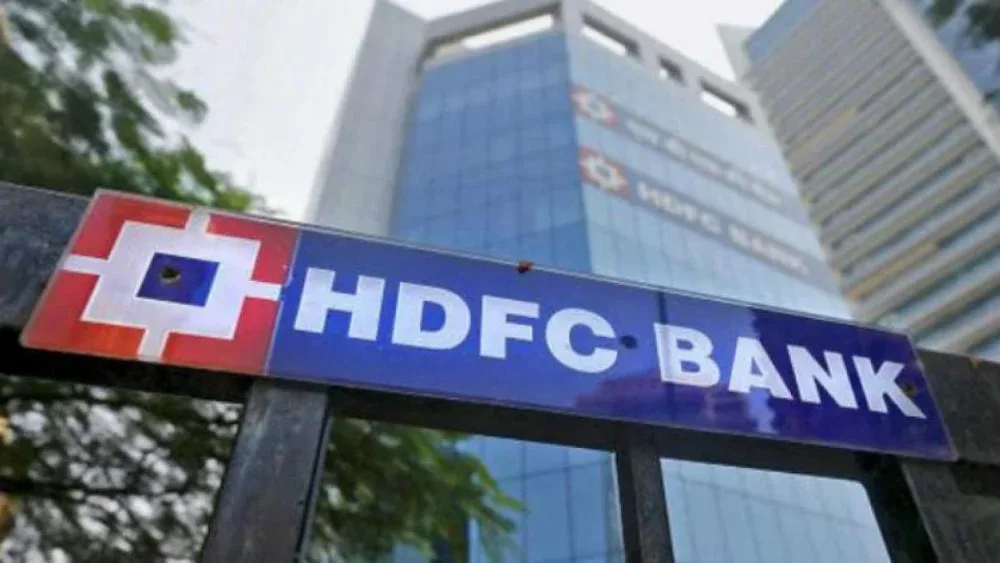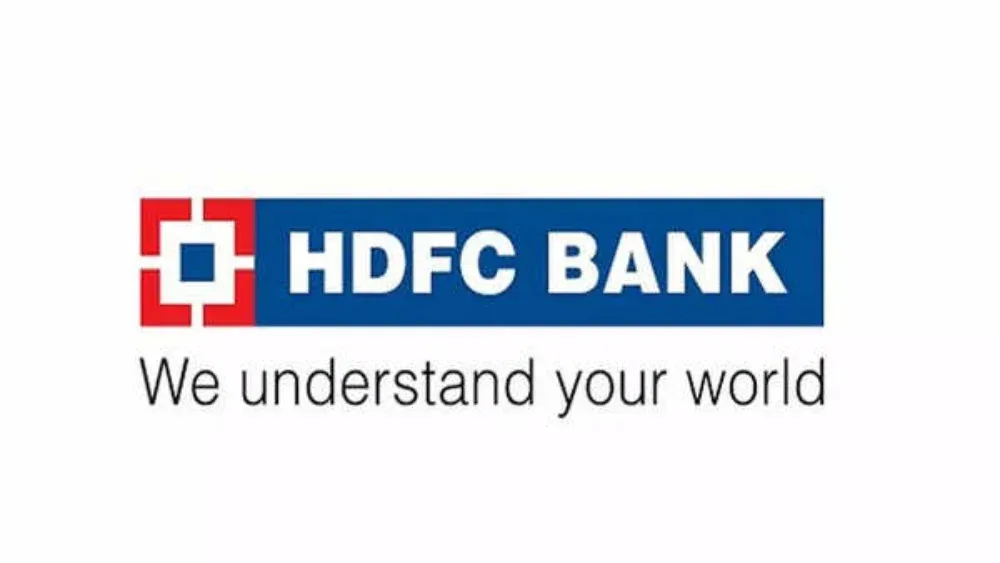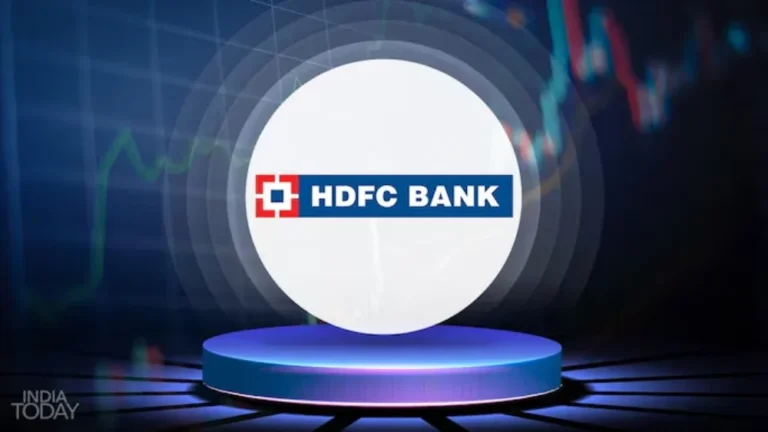Stay updated on HDFC Bank share price with real-time market insights and analysis. Explore trends, performance metrics, and expert opinions to make informed investment decisions.
Table of Contents
Introduction
If you’re curious about HDFC Bank’s share price, you’re not alone. This topic is crucial for investors, analysts, and anyone interested in the banking sector. So, what exactly is HDFC Bank’s share price, and why is it important? Let’s dig in and explore!
What is HDFC Bank Share Price?
HDFC Bank share price refers to the market price of a single share of HDFC Bank, one of India’s leading private sector banks. This price fluctuates based on various market conditions, economic indicators, and the bank’s financial performance. You can think of it as the bank’s “score” in the stock market game—reflecting its overall health and investor sentiment.
The share price is determined by supply and demand dynamics in the stock market. When more people want to buy shares than sell them, the price goes up. Conversely, when more people want to sell shares than buy them, the price goes down. It’s a constant ebb and flow, making the stock market an exciting yet challenging space to navigate.
Importance of HDFC Bank Share Price
Understanding the share price of HDFC Bank is vital for several reasons:
- Investment Decisions: Investors use share prices to determine whether to buy, sell, or hold their investments. A rising share price might signal a good time to invest, while a falling price could indicate potential trouble.
- Market Sentiment: The share price often reflects the overall sentiment about the bank’s future prospects. A consistently high share price usually indicates strong investor confidence, while a decline may suggest concerns about the bank’s performance.
- Benchmarking: For analysts, HDFC Bank’s share price serves as a benchmark to compare performance against competitors in the banking sector.
- Economic Indicators: Changes in the share price can also be indicators of broader economic trends, giving investors insights into market conditions and investor behavior.
Key Factors Influencing Share Price
Several key factors can impact HDFC Bank’s share price. Let’s break them down:
Financial Performance
The bank’s quarterly earnings, profit margins, and asset quality are crucial indicators. When HDFC Bank reports strong financial results, investors often respond positively, leading to an increase in share price. Conversely, poor performance can result in a decline. Think of it like a report card—the better the grades, the happier everyone is!
Moreover, financial metrics such as Return on Equity (ROE) and Net Interest Margin (NIM) are vital in assessing the bank’s profitability. Higher ROE and NIM often correlate with stronger share prices.
Market Trends
Broader market trends also play a significant role. If the banking sector is thriving, HDFC Bank will likely benefit from positive sentiment. Conversely, if there’s a downturn, even strong banks can see their share prices dip. It’s like riding a wave—sometimes you’re surfing high, and other times you’re paddling against the current.
For instance, if interest rates are rising and the economy is growing, banks, including HDFC, may see increased demand for loans, which can boost their stock prices.
Economic Indicators
Economic factors such as interest rates, inflation, and GDP growth can influence HDFC Bank’s share price. For example, rising interest rates may improve banks’ profitability but can also deter borrowing, impacting overall growth. It’s a balancing act that investors keep a close eye on.
Inflation affects consumer purchasing power and can influence loan demand. During high inflation, consumers may be more cautious about borrowing, affecting the bank’s business.
About HDFC Bank
Company Overview
HDFC Bank was established in 1994 and has grown to become one of the largest private sector banks in India. Offering a wide range of banking products and services, it caters to millions of customers across the country. Whether you’re looking for personal banking, corporate banking, or investment services, HDFC Bank has something for everyone.
The bank operates through a vast network of branches and ATMs, ensuring that customers have access to their banking needs at their convenience. HDFC Bank is also known for its emphasis on digital banking solutions, which has attracted a younger, tech-savvy customer base.
History and Milestones
The journey of HDFC Bank is nothing short of remarkable. Here are a few milestones:
- 1994: HDFC Bank is founded.
- 1995: The bank launches its first ATM in India.
- 2000: HDFC Bank goes public and gets listed on the stock exchanges.
- 2001: The bank launches internet banking, which revolutionizes how customers manage their finances.
- 2015: HDFC Bank becomes the first Indian bank to cross ₹5 lakh crores in assets.
These milestones illustrate the bank’s growth trajectory and solidify its position in the financial landscape. The commitment to innovation and customer service has helped HDFC Bank maintain a strong competitive position in the market.
Leadership Team
HDFC Bank is led by a dynamic team of experienced professionals. Their strategic vision and operational expertise have been instrumental in steering the bank toward success. Under their leadership, HDFC Bank has focused on customer satisfaction and technological advancements, keeping it ahead of the competition.
The leadership team frequently engages with stakeholders and investors to communicate the bank’s vision and strategy. This transparency builds trust and helps align investor expectations with the bank’s goals.



Current Market Value of HDFC Bank Share Price
Understanding the market value of HDFC Bank share price is crucial for potential investors. Here’s a snapshot:
Market Capitalization Overview
As of the latest data, HDFC Bank’s market capitalization stands at approximately ₹XX,XXX crores. This figure is calculated by multiplying the current share price by the total number of outstanding shares, providing a clear picture of the bank’s overall market value.
Market capitalization is an essential metric for investors, as it gives a sense of the bank’s size relative to its peers. A higher market cap often indicates stability and a solid market presence.
Recent Performance Trends
Recent trends in HDFC Bank’s share price reveal an upward trajectory, driven by strong financial results and positive market sentiment. Investors are generally optimistic about the bank’s future, which is reflected in its stock performance.
Over the past year, HDFC Bank has consistently reported growth in its loan book and a reduction in non-performing assets (NPAs), which has positively impacted its stock price. Such performance metrics reassure investors about the bank’s risk management practices and operational efficiency.
Price Fluctuations
It’s essential to note that share prices can fluctuate significantly. HDFC Bank’s share price may vary based on market conditions, investor sentiment, and economic indicators. Staying updated on these fluctuations can help investors make informed decisions.
For instance, during times of economic uncertainty, like a recession, even well-performing stocks may see price declines. Thus, it’s crucial for investors to monitor broader economic trends as well as the bank’s internal performance metrics.
Current HDFC Bank Share Price Overview
| Metric | Value |
|---|---|
| Current Share Price | ₹1,708.25 |
| Market Capitalization | ₹13.03 trillion |
| 52-Week High | ₹1,794.00. |
| 52-Week Low | ₹1,363.45. |
| Dividend Yield | 1-2% |
Comparison with Competitors
In the highly competitive banking sector, HDFC Bank is not alone. Let’s see how it stacks up against its competitors.
Major Players in the Banking Sector
Competitors include State Bank of India (SBI), ICICI Bank, and Axis Bank. Each of these banks has its unique strengths and market strategies.
- State Bank of India (SBI): As the largest public sector bank in India, SBI has a vast network and customer base, providing a formidable challenge to HDFC Bank.
- ICICI Bank: Known for its robust digital banking platform, ICICI Bank appeals to tech-savvy customers and has seen significant growth in its retail banking segment.
- Axis Bank: This bank has been focusing on expanding its retail banking services and has made substantial investments in technology to enhance customer experience.
HDFC Bank’s Competitive Edge
So, what makes HDFC Bank stand out? Here are a few competitive advantages:
- Strong Brand Reputation: HDFC Bank is known for its reliability and customer service. This trust attracts more customers and enhances its market position.
- Diverse Product Offerings: From loans to investments, HDFC Bank has a comprehensive range of products that cater to various customer needs. This diversity allows them to capture a broader market share.
- Technological Innovation: The bank has invested heavily in digital banking, ensuring that customers have access to services anytime, anywhere. This modern approach helps it attract tech-savvy customers.
- Robust Risk Management: HDFC Bank has a strong focus on risk management, which has enabled it to maintain lower NPA levels compared to many peers. This prudent approach reassures investors regarding the bank’s financial stability.
Why Invest in HDFC Bank Shares?
You might be wondering if investing in HDFC Bank shares is a smart choice. Let’s break it down!
Growth Potential
The Indian banking sector is poised for growth, and HDFC Bank is well-positioned to capitalize on this. Factors contributing to this potential include:
- Rising Demand for Credit: As the economy grows, more people and businesses will seek loans, boosting HDFC Bank’s profitability. This growth in the loan book can have a significant positive impact on the share price.
- Expanding Customer Base: With its wide range of services, the bank continues to attract new customers, further enhancing its growth prospects. The focus on digital banking has also helped in reaching a younger demographic.
- Economic Growth: India’s GDP is expected to grow in the coming years, driven by government initiatives and reforms. This economic growth can enhance banking activities, leading to improved profitability for HDFC Bank.
Risks to Consider
However, it’s essential to be aware of the risks involved:
- Market Volatility: Stock prices can fluctuate based on various factors, including market sentiment and economic conditions. Investors should be prepared for potential ups and downs.
- Regulatory Changes: Changes in banking regulations can impact operations and profitability, so it’s vital to stay informed. For instance, shifts in interest rates or lending norms could influence HDFC Bank’s business model.
- Competition: The banking sector is highly competitive, and maintaining market share requires constant innovation and adaptation. HDFC Bank must continually evolve to meet customer expectations and fend off competitors.
Financial Analysis of HDFC Bank
To better understand HDFC Bank’s share price, it’s essential to delve into a financial analysis of the bank.
Income Statement Overview
HDFC Bank’s income statement provides insights into its profitability and operational efficiency.
- Total Revenue: Revenue is primarily derived from interest income and fee-based services. A growing revenue base indicates strong customer demand and effective service delivery.
- Net Profit: This figure represents the bank’s earnings after all expenses, taxes, and provisions for bad loans have been deducted. Consistent net profit growth is a positive indicator for investors.
- Cost-to-Income Ratio: This ratio measures the bank’s operating efficiency. A lower ratio indicates that the bank is spending less to generate each unit of income, which is favorable for profitability.
Balance Sheet Analysis
The balance sheet provides a snapshot of HDFC Bank’s financial health.
- Assets: HDFC Bank’s total assets have shown consistent growth, indicating strong expansion in its lending and investment activities.
- Liabilities: The composition of liabilities, particularly customer deposits, is crucial. A stable and growing deposit base supports the bank’s lending activities.
- Equity: The bank’s equity is a measure of its financial strength and stability. A strong capital base provides a cushion against potential losses.
Key Ratios to Watch
Certain financial ratios can provide valuable insights into HDFC Bank’s performance:
- Return on Equity (ROE): This ratio measures the bank’s profitability in relation to shareholder equity. A higher ROE indicates effective management and strong earnings generation.
- Net Interest Margin (NIM): This metric indicates the bank’s profitability in its lending operations. A higher NIM suggests efficient asset management and pricing strategies.
- Non-Performing Assets (NPA) Ratio: This ratio measures the proportion of loans that are not being repaid. A lower NPA ratio is preferable, indicating better credit risk management.
HDFC Bank’s Strategic Initiatives
HDFC Bank has undertaken several strategic initiatives to enhance its market position and drive growth.
Digital Transformation
In today’s digital age, HDFC Bank has focused on enhancing its digital banking capabilities. The bank has introduced various features, including mobile banking, online account opening, and digital loan applications, making banking more accessible to customers.
Expansion Plans
HDFC Bank continues to expand its branch and ATM network across India, particularly in underserved areas. This expansion strategy aims to capture a larger customer base and increase market penetration.
Sustainable Banking Practices
With growing concerns about climate change and sustainability, HDFC Bank has committed to adopting environmentally friendly practices. This includes financing renewable energy projects and promoting sustainable lending.
Customer-Centric Approach
The bank emphasizes customer service and satisfaction. By offering personalized financial solutions and improved customer support, HDFC Bank aims to enhance customer loyalty and retention.
Dividend Policy of HDFC Bank
Understanding HDFC Bank’s dividend policy is essential for investors seeking regular income from their investments.
Dividend Payout Ratio
The dividend payout ratio indicates the percentage of earnings distributed to shareholders as dividends. HDFC Bank has historically maintained a healthy payout ratio, reflecting its commitment to returning value to shareholders.
Dividend History
HDFC Bank has a strong track record of paying dividends consistently. The bank typically announces dividends after the quarterly earnings reports, providing shareholders with regular returns on their investments.
Impact of Dividends on Share Price
Dividends can positively impact share prices, as many investors view them as a sign of financial health and stability. A consistent dividend-paying bank often attracts income-focused investors, leading to increased demand for shares.
Conclusion
In conclusion, HDFC Bank share price is a vital aspect of the banking sector and a significant indicator of the bank’s overall health. With its robust growth potential and strong market presence, HDFC Bank remains an attractive option for investors. However, as with any investment, it’s essential to stay informed and consider both the opportunities and risks involved. Whether you’re a seasoned investor or just starting, understanding HDFC Bank and its share price dynamics can provide valuable insights for your investment journey!
By paisainvests
FAQs About HDFC Bank Share Price
How can I check the current HDFC Bank share price?
You can check the current share price on financial news websites, stock market apps, or the official stock exchange.
What factors influence HDFC Bank’s share price?
Factors include financial performance, market trends, economic indicators, and investor sentiment.
Is HDFC Bank a good investment?
While HDFC Bank has a strong reputation and growth potential, it’s essential to consider personal investment goals and conduct thorough research.
How often does HDFC Bank pay dividends?
HDFC Bank typically pays dividends on a quarterly basis, but this can vary based on the bank’s financial performance.
Can I invest in HDFC Bank shares through a mutual fund?
Yes, there are mutual funds that include HDFC Bank shares in their portfolios, allowing for diversified investment.



